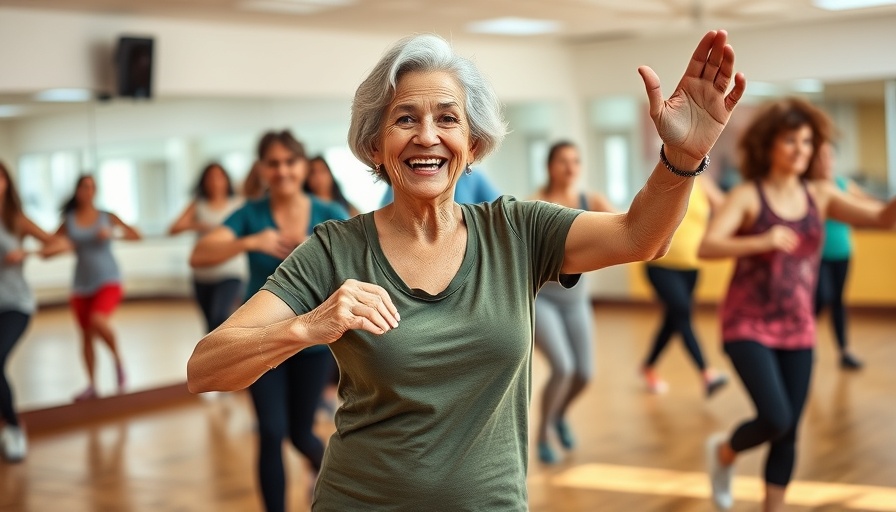
Unlocking Mental Wellness Through Dance
For many seniors, finding a fitness program that resonates is crucial for both physical and mental health. Laurie, at 68, discovered Zumba and has experienced a transformative journey, celebrating improved fitness while significantly enhancing her mental well-being. This vibrant dance fitness program, characterized by its engaging music and lively choreography, proves that staying active is not merely about maintaining physical strength; it also plays an indispensable role in mental health.
The Power of Dance on Mental Health
Studies indicate that various forms of dancing, particularly Zumba, foster communication between the body and mind, laying the groundwork for mental resilience. Music and movement intertwine to create an environment where participants push aside daily stresses. In Laurie's report, she reflects on how her Zumba journey has not only contributed to better coordination but also fostered connections in her community and led to a renewed sense of confidence.
Building Community Connections
Group activities such as Zumba emphasize community building, an important factor for seniors who may experience social isolation. Joining a Zumba class helps seniors step beyond their comfort zones and partake in community engagements—from group outings to simply enjoying each other’s company after class. This camaraderie not only makes attending classes more enjoyable but encourages continued participation, essential for reaping the full benefits of the practice.
Enhancing Brain Health and Memory
Dance, particularly Zumba, engages cognitive functions by requiring participants to remember complex choreographies and rhythms. Research has shown that regular engagement in such activities forms new neural pathways, which can mitigate the risk of cognitive decline. The necessity to concentrate fully during Zumba prevents distraction, providing an invigorating break from worries, making it a recommended practice for improving both mood and cognitive function. Engaging in Zumba twice a week, or more, can lead to prolonged benefits for memory and overall mental wellness.
Getting Started With Zumba
For seniors considering Zumba, it’s essential not to feel daunted by the misconception that good dancing skills are a prerequisite. Creating a fun and welcoming environment, Zumba caters to everyone, regardless of fitness level or ability. Classes are designed to provide an inclusive atmosphere. Begin slowly and increase frequency as confidence builds. Whether you join a local community center, assisted living facility, or participate in virtual sessions, Zumba opens doors to physical and emotional wellness.
Embracing Your Fitness Journey
Participating in a fitness activity such as Zumba isn't just about physical health; it’s about enriching lives through dance, community, and joy. If you're part of a senior living community or seeking assisted living options, embracing a group fitness like Zumba can drastically change your outlook on exercise. Whether you're in a senior center or attending local classes, you’re never too old to enhance your physical and mental health.
Take a moment to reflect: Are you engaging in activities that uplift your mood and well-being? If not, it’s time to explore the various senior living options available near you that focus on active living!
 Add Row
Add Row  Add
Add 




Write A Comment